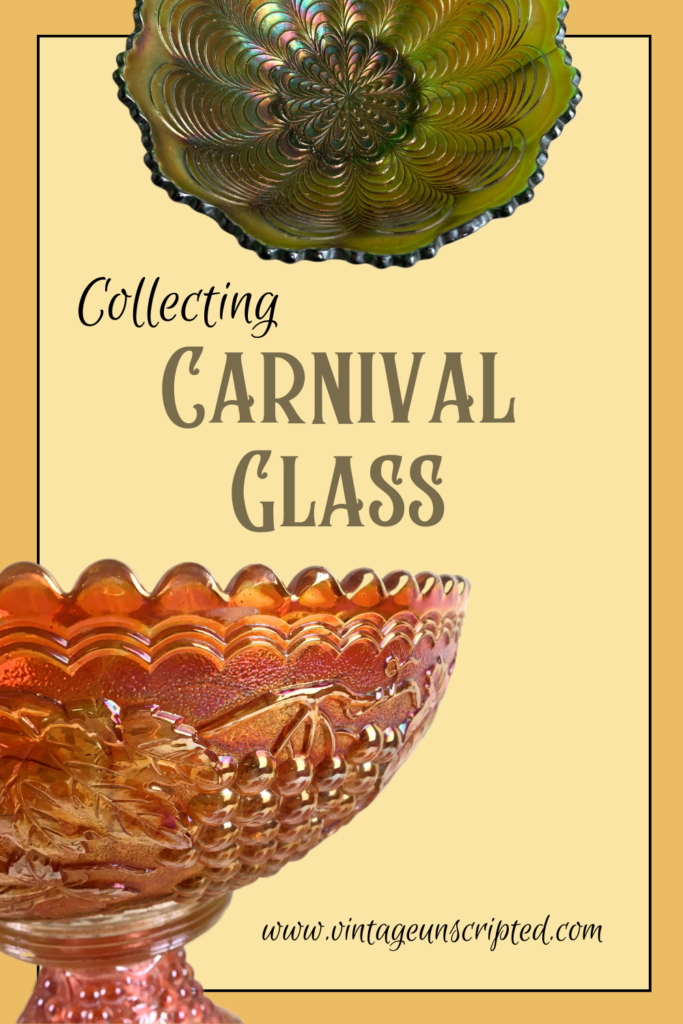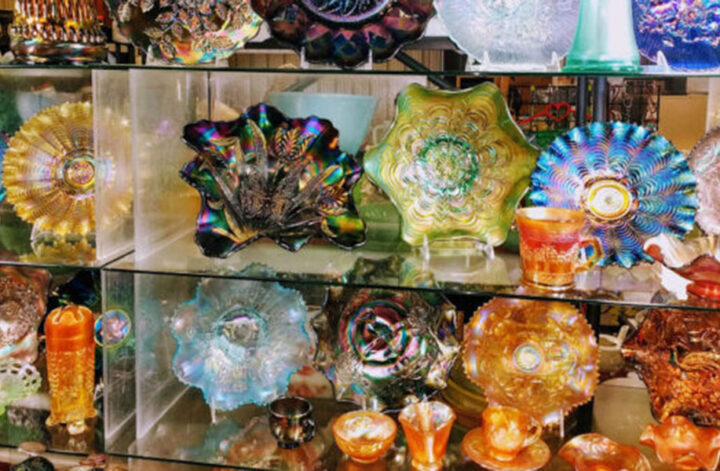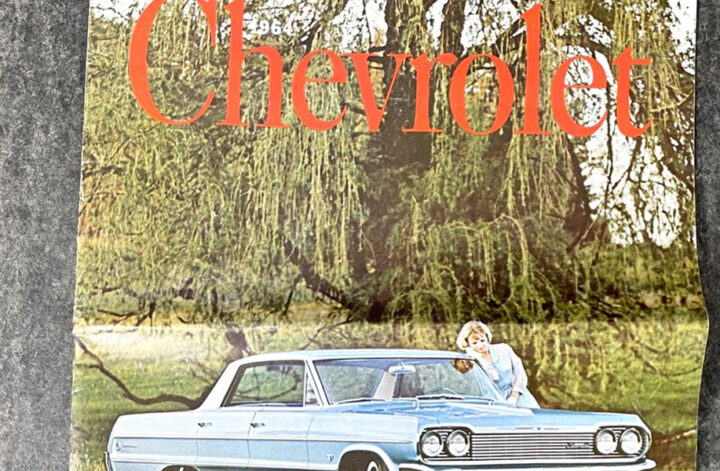Collecting carnival glass can be a fun way to add color and texture to your home. Due to the abundant supply, it’s still relatively easy to find. There are loads of common pieces out there at reasonable prices. When shopping for decorative value, there’s lots to choose from. If you’ve been collecting for a while, you may have become more discerning in your quest. When looking for rarer items, the prices tend to increase dramatically, although finding your holy grail is often worth it.
A Quick History
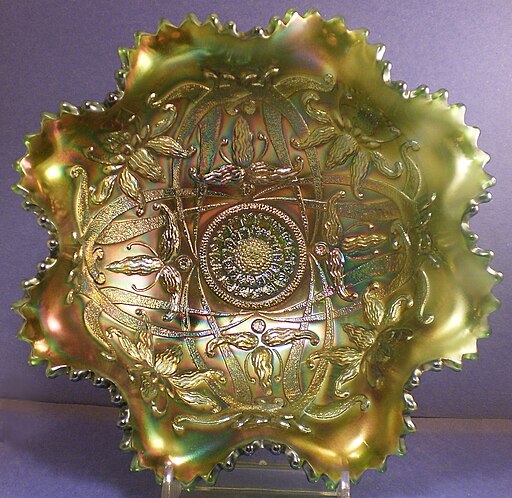
What we know as carnival or iridescent glass was originated by the Fenton Art Glass Company in 1908. Originally known as Iridill, Fenton was by far the largest producer of iridescent glass, although carnival glass was eventually made on almost every continent. Interestingly, very little carnival glass was produced worldwide during the late 1930s and 1940s.
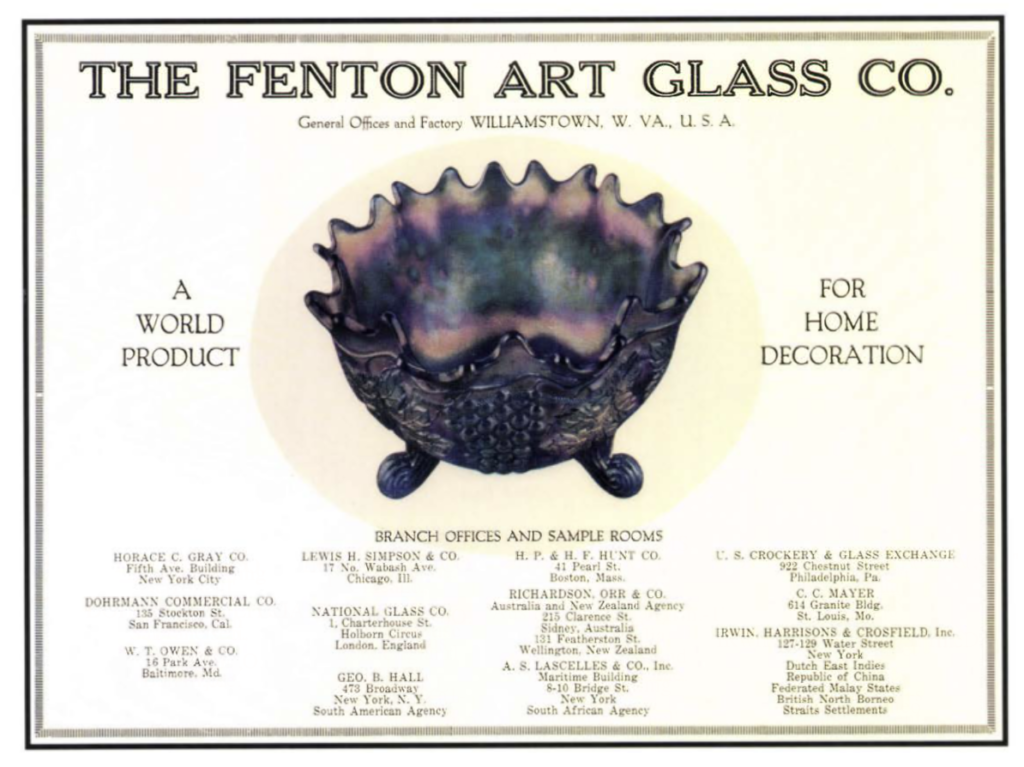
Why “Carnival” Glass?
Do the words “carnival glass” bring back memories of pitching rings at the county fair and trying to win a giant stuffed animal? Here’s why: the name “carnival glass” apparently came about due to overproduction in the 1920s and 30s. This led to these items being sold by suppliers to the carnival industry. They were often used as giveaways and prizes at traveling circuses and carnivals around the country due to their low cost and abundance. The bright shiny colors were an added attention-getter.
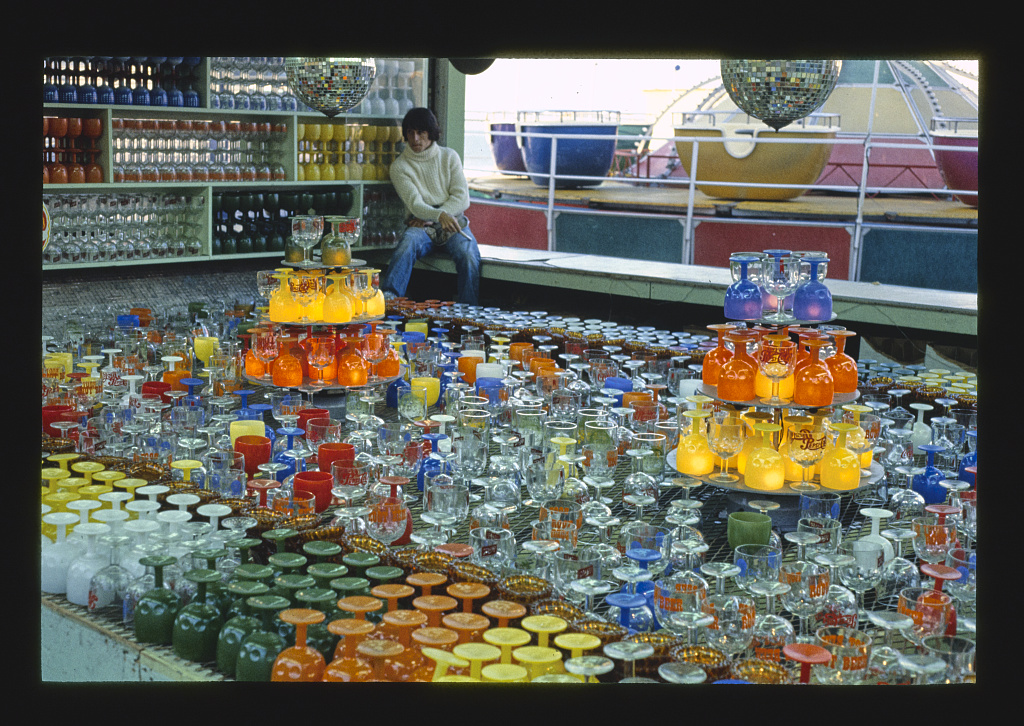
Collecting Carnival Glass
The bright colors, patterns, and affordability lead to the popularity of carnival glass throughout the early 20th century. While finding it is still relatively easy to do, there are few highly collectible and rare pieces out there.
The most common color is marigold, shown below. Marigold was the only color named for the iridescent application rather than the base color of the glass itself. Marigold was created with a clear glass base, making it less costly to produce.

Of course, the rarity of color, pattern, and condition leads to higher prices. So too does finding complete sets and unusual forms. Since so many factories produced similar pieces, sometimes using the same molds, it can be difficult to determine when an item was made or by whom. There are many books and websites with good in-depth information for collectors who wish to dive deeper into this pastime. However, for those just starting out or looking to add some color to their decor, the best advice as always is to buy what you love.
Extra Credit:
The Glass Encyclopedia has some fabulous articles on the history of both American and English Carnival Glass here.
Carnival Glass Worldwide is a great reference website.
David Doty’s Carnival Glass website is another good reference.
Collectors Weekly also has a good article on Carnival Glass.
A Brief History of Carnival Glass, the Early 20th Century Collectible Making a Comeback on Apartment Therapy
